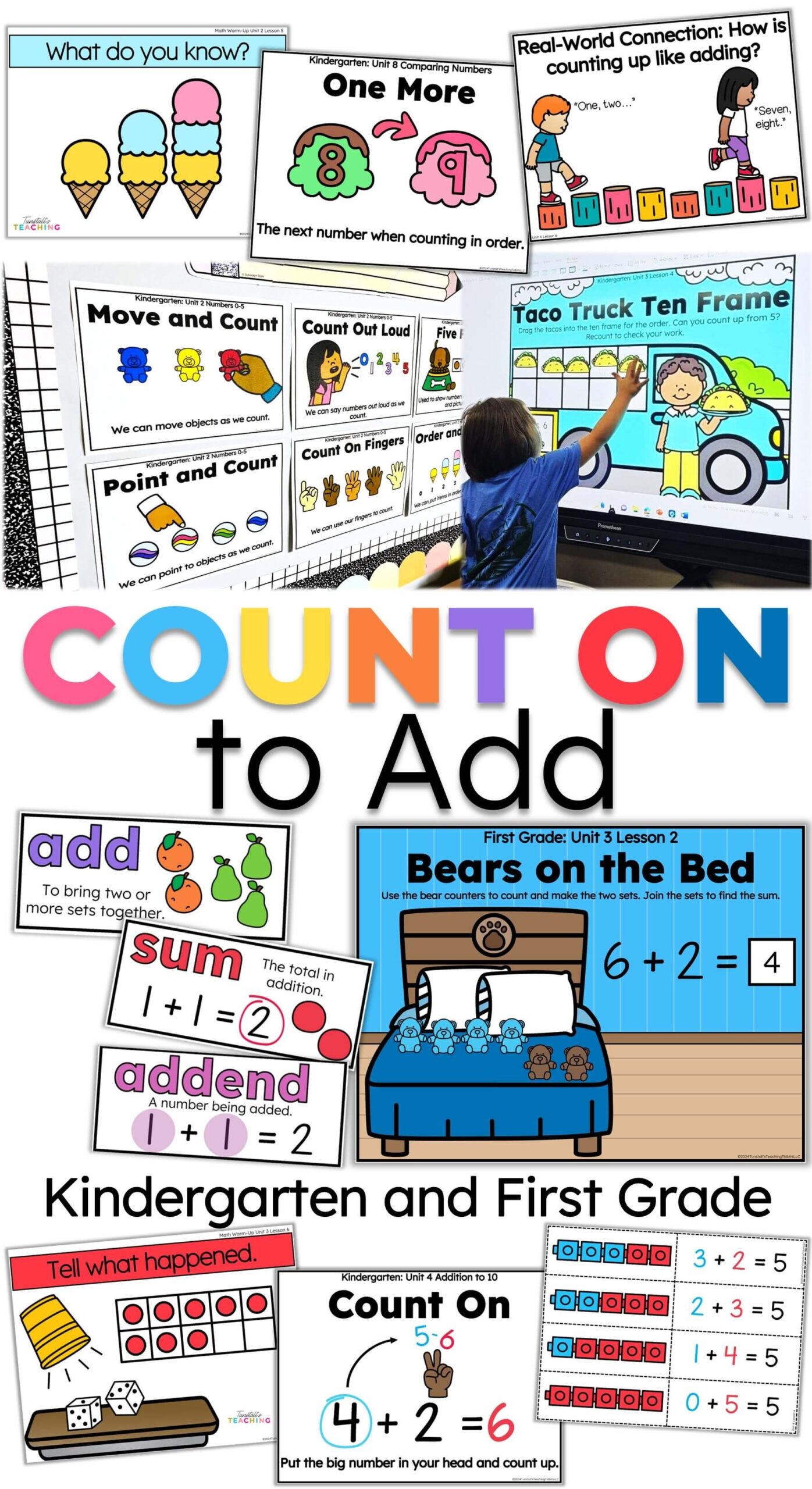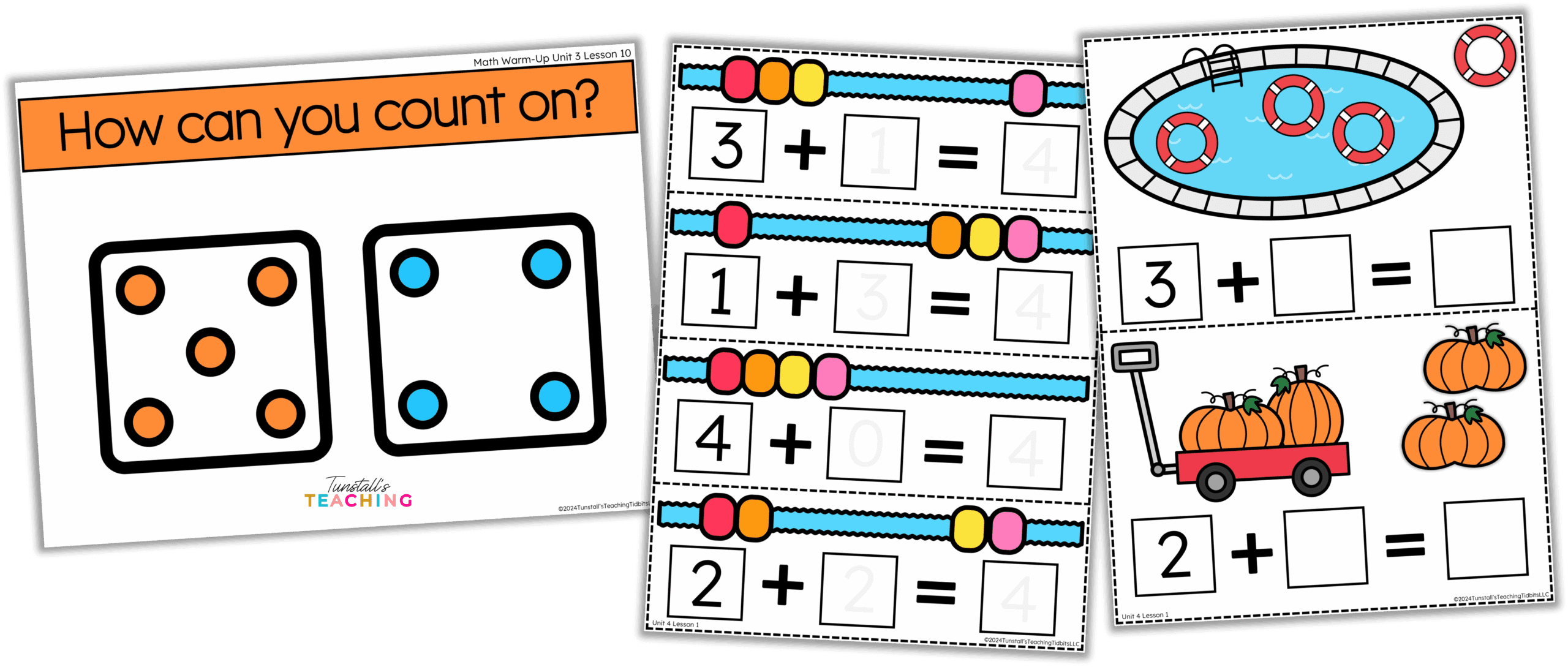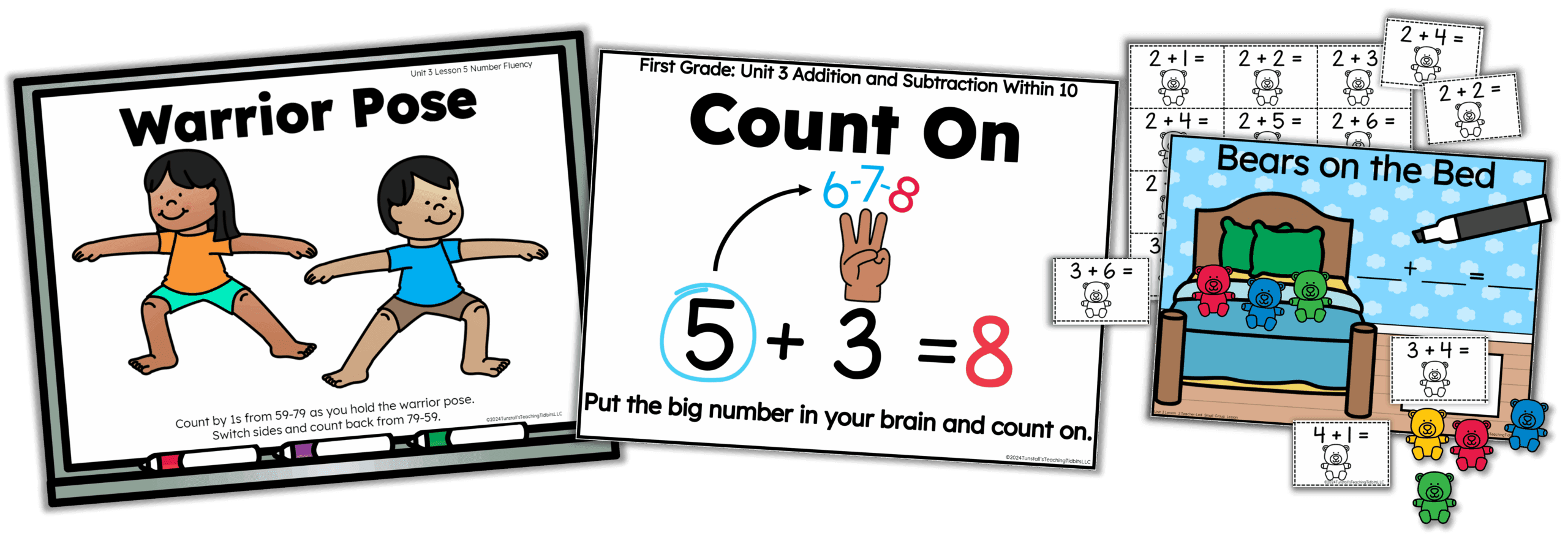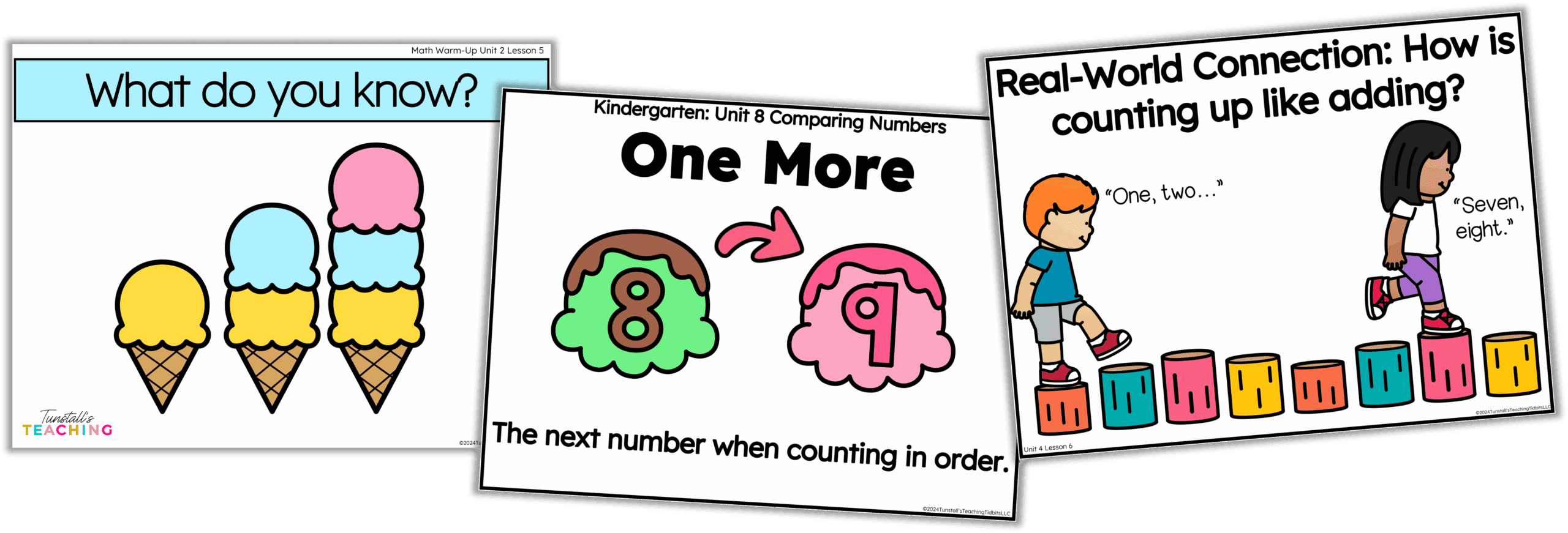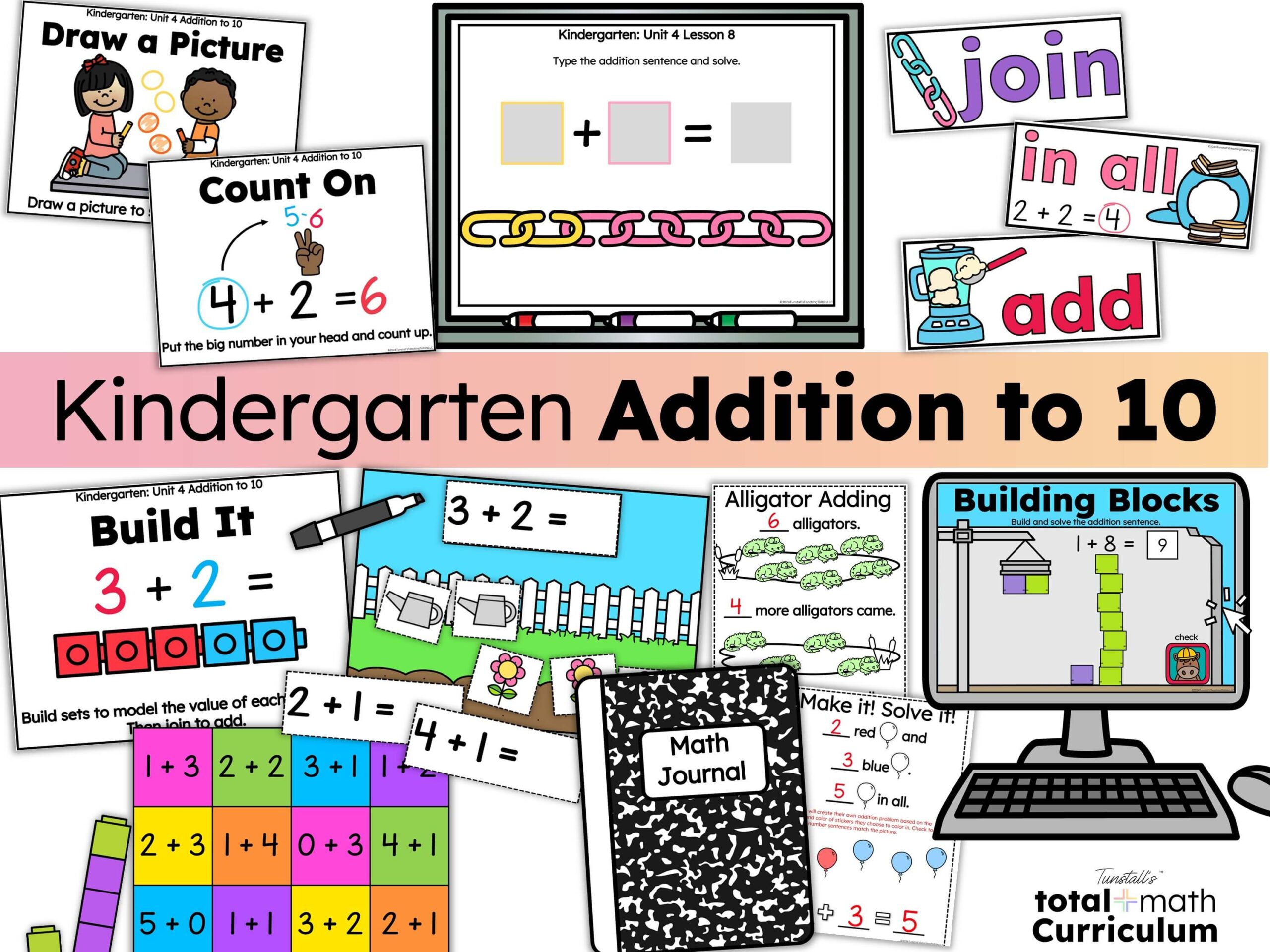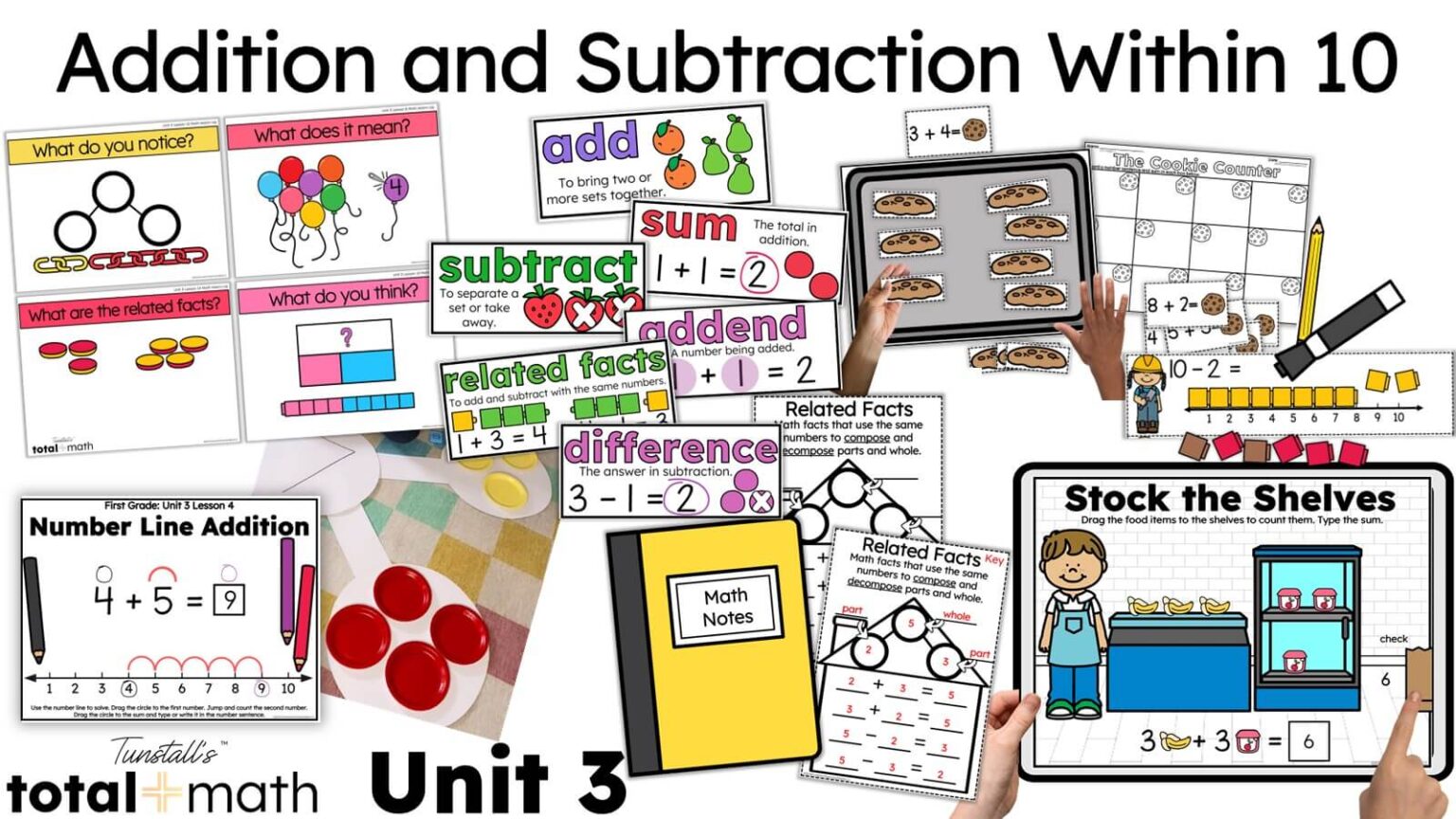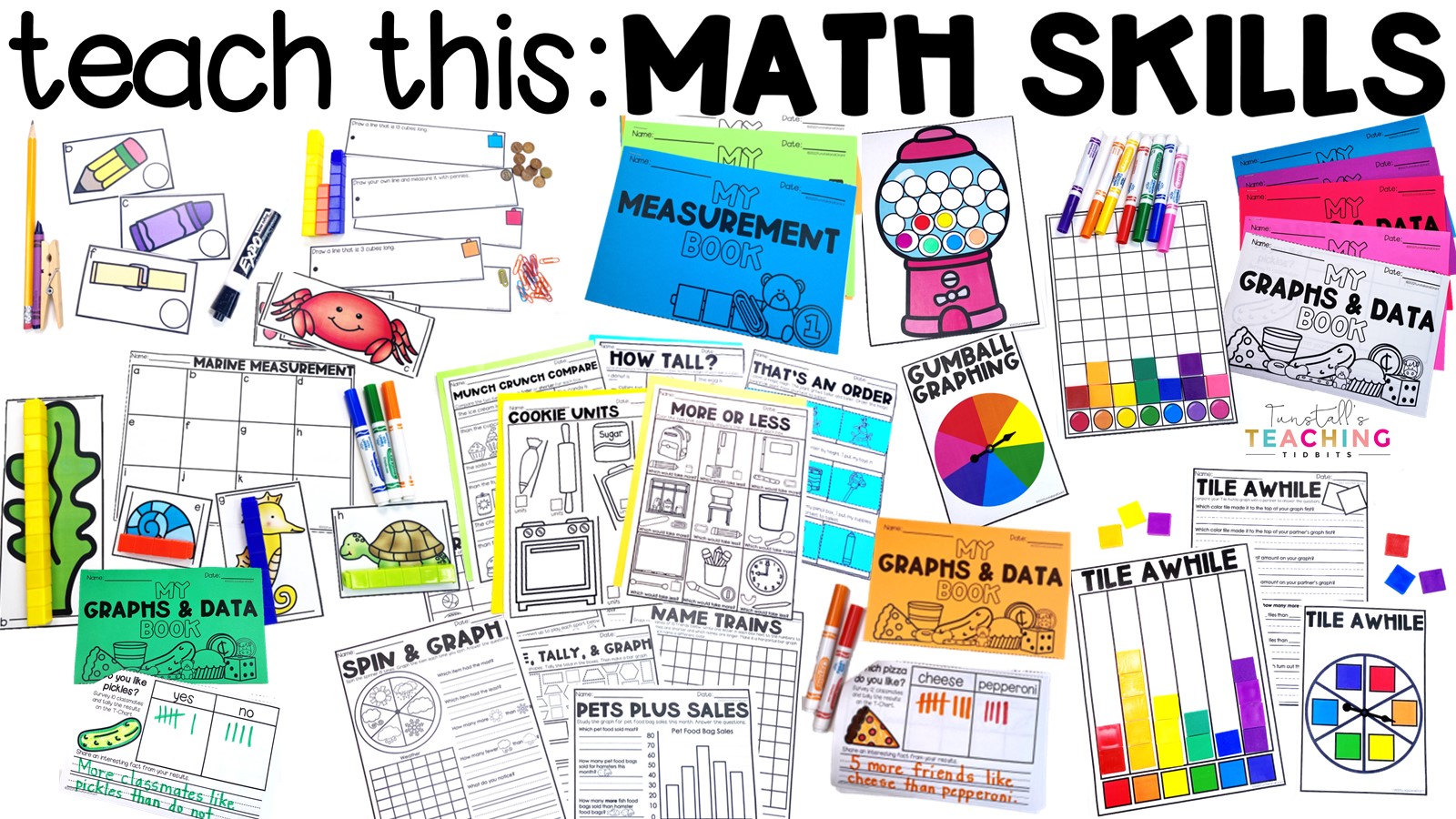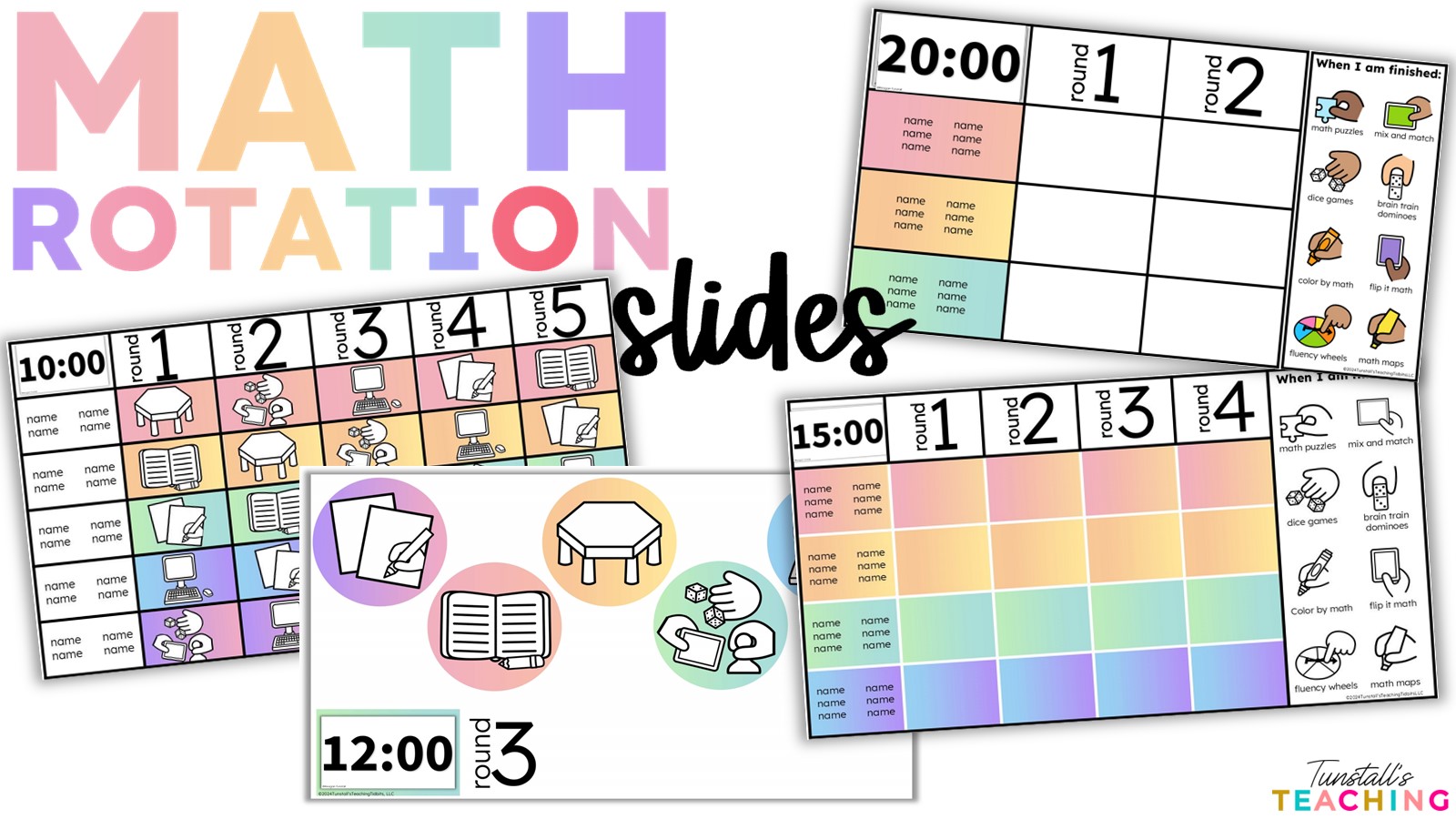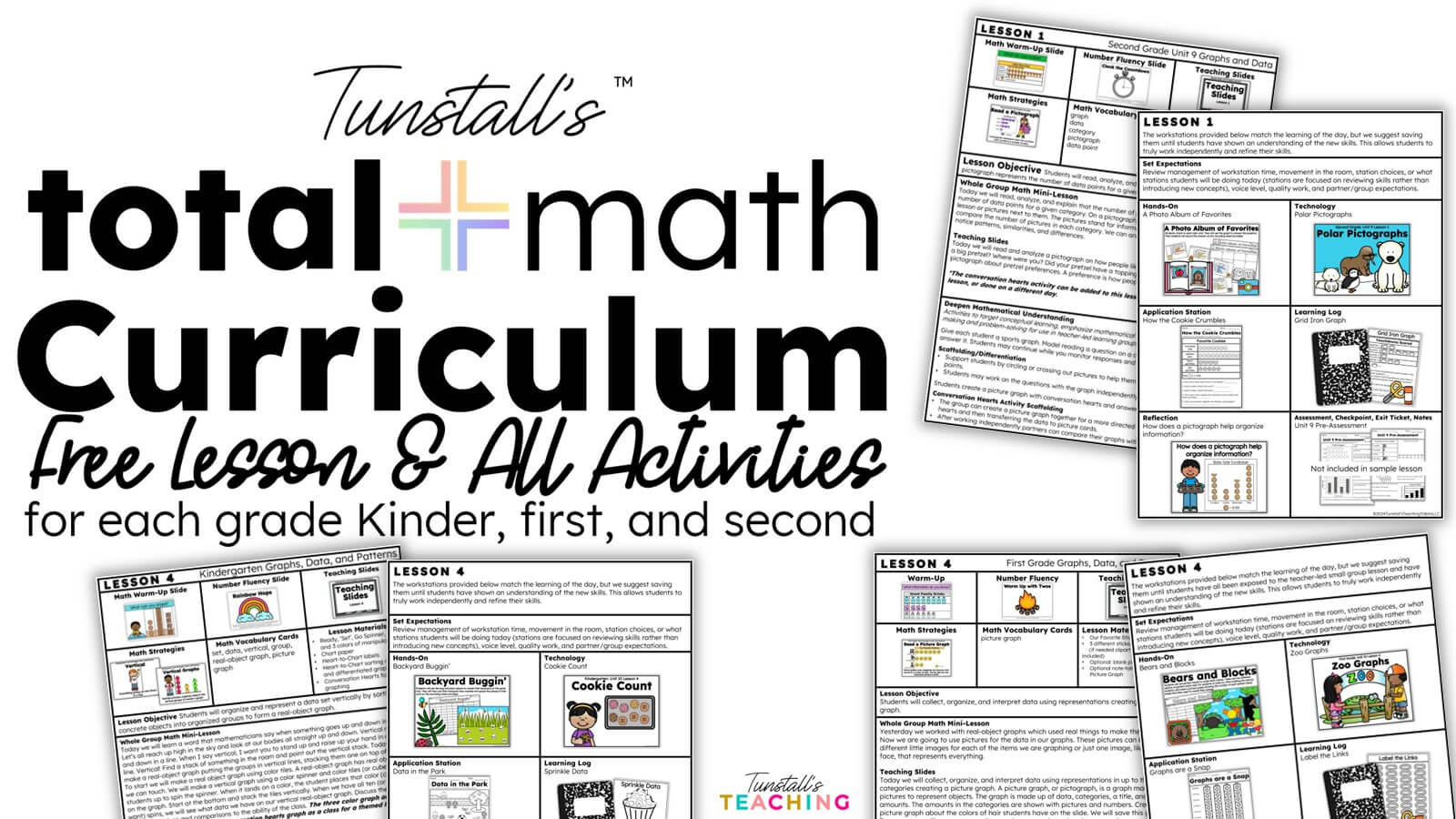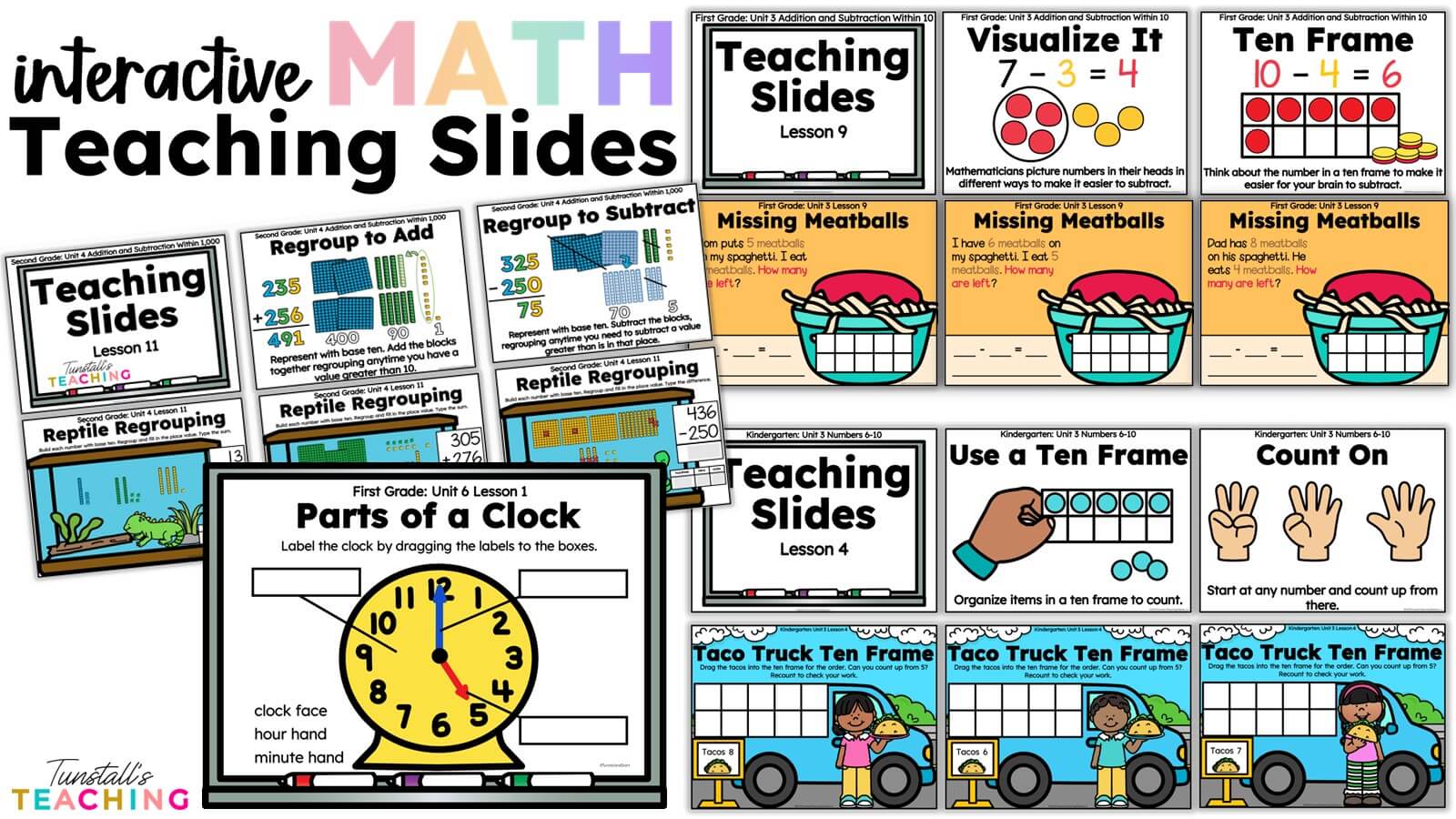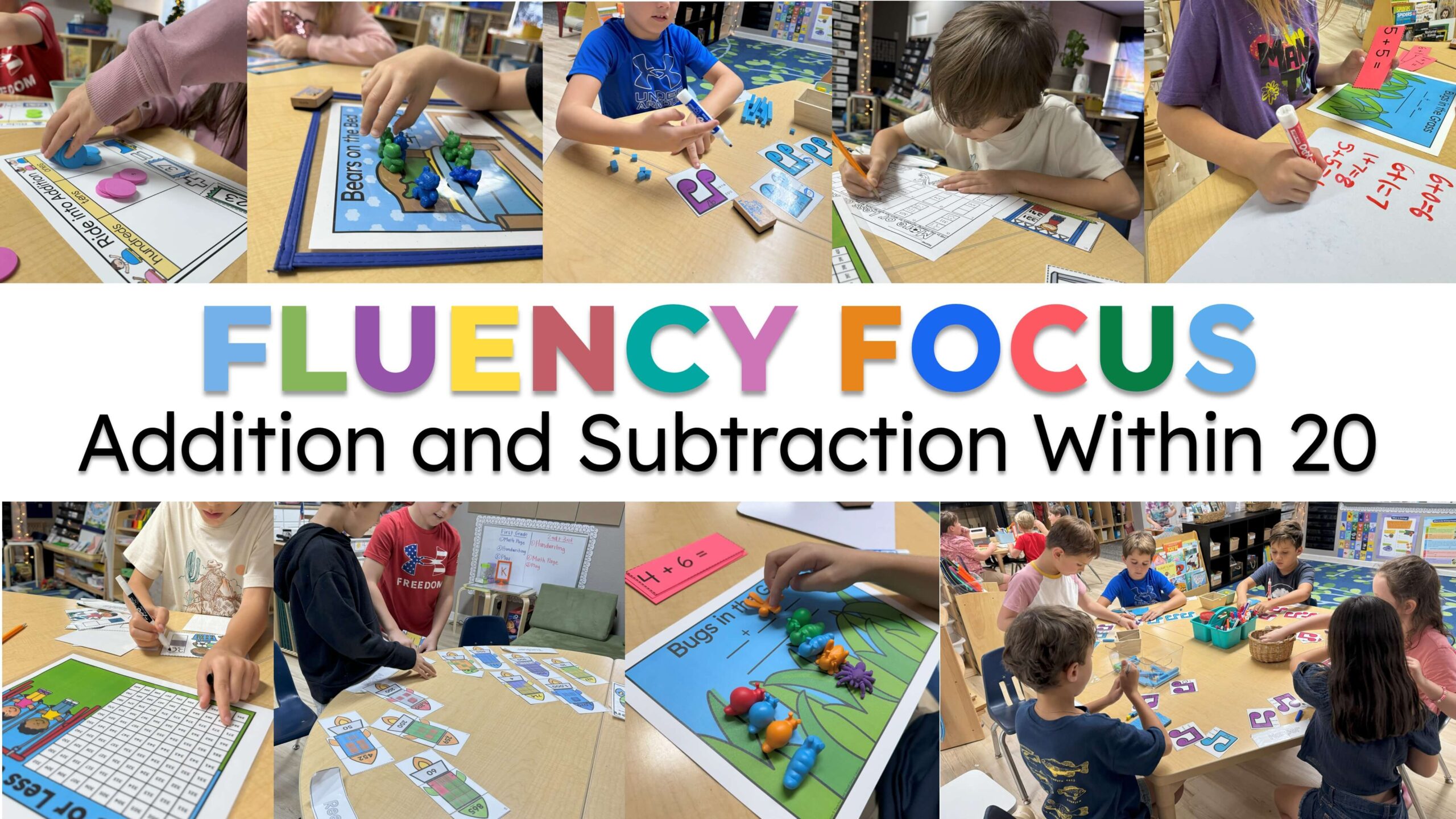Counting On to Add in Kindergarten and First Grade: A Simple Strategy That Builds Fluency
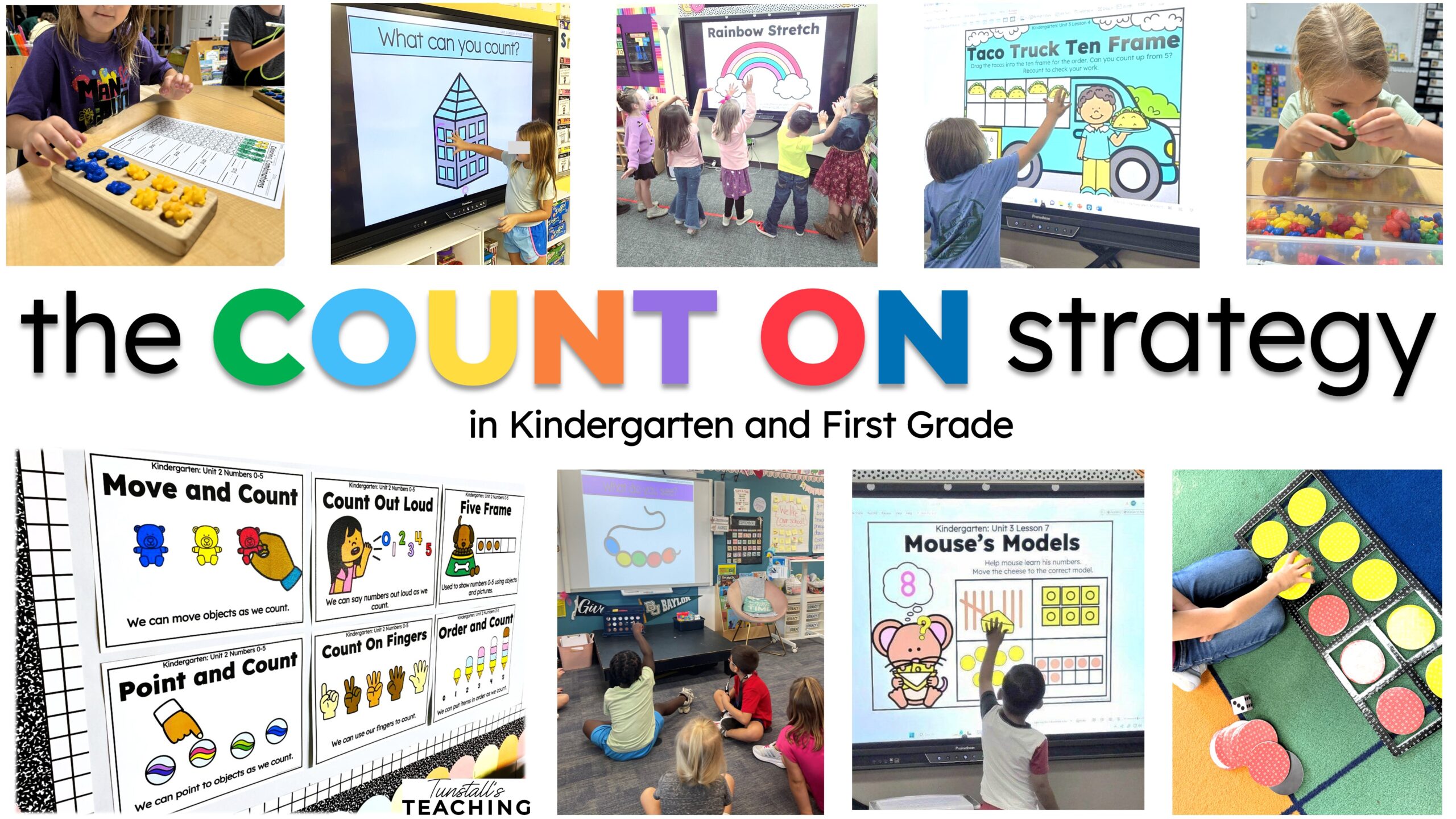
One of the very first addition strategies students learn in early elementary is counting on. Instead of starting back at one every time, students begin with the greater number and count forward.
In kindergarten, this strategy begins with simple counting activities using objects, number mats, and games. By first grade, counting on becomes an essential mental math tool for building addition fluency and confidence. This simple shift helps children move from counting all to solving problems more efficiently. Counting on is a crucial bridge toward more advanced strategies like making ten and using doubles.
In this post, I’ll share research-backed teaching practices that make teaching counting on engaging clear, and effective across kindergarten and first grade.
Why Counting On Matters in Kindergarten and First Grade
Counting on is a high-yield strategy because it:
- Strengthens number sense and addition fluency.
- Transitions students from concrete counting to mental math.
- Lays the groundwork for more complex strategies.
Teaching Counting On in Kindergarten
In Kindergarten, counting on should remain concrete and playful. Students can:
-
Use counters, cubes, or fingers to model addition problems.
- Move and count in different ways each day to build automaticity and number fluency.
-
Act out simple story problems with classmates (“3 kids are on the rug, 2 more join—how many in all?”).
-
Sing or chant while moving objects to reinforce the rhythm of counting forward.
-
Explore hands-on games and math mats that give repeated practice with numbers up to 10.
Teaching Counting On in First Grade
In First Grade, counting on shifts from simple counting activities to an efficient addition strategy students can use across the math block. At this stage, the goal is to move students from needing objects every time toward more mental math strategies supported by visuals.
Ways to teach counting on in 1st grade:
-
Whole Group Math Lessons Slides: Introduce vocabulary (addend, sum) and model how to “lock in” the larger number, then count on.
-
Number Mats & Application Pages: Give students guided practice solving problems step-by-step.
-
Interactive Practice: Reinforce fluency in many formats all through the year in the aligned math workstations.
-
Number Lines & Strategy Posters: Provide visual supports so students can check their thinking and develop independence.
Universal Tools for Kindergarten and First Grade
While the way we teach counting on looks different in Kindergarten and First Grade, there are some universal tools that support learners in both grades. These resources help teachers differentiate instruction and give students consistent visuals and reminders as they grow.
-
Number Lines
A number line is a powerful bridge from concrete to abstract. In Kindergarten, students can hop along the line to physically see the count. In First Grade, they can use the line as a quick reference or even begin to “see” the hops mentally. -
Strategy Posters & Anchor Charts
Posting visual reminders of the counting on strategy in your math area helps students remember what to do. These posters grow with your students solidifying concepts with vertical alignment. Kindergarten Strategies Posters and First Grade Strategies Posters -
Small-Group Lessons
Whether in Kindergarten or First Grade, small-group math time is the best way to target student needs. Some students may still need hands-on counters, while others are ready to solve problems mentally with just a quick prompt.
Try a Free Sample of our Number Fluency Slides
Counting slides make it easy to remember and practice counting to build number sense and fluency all through the year. Even better, the fun clipart and body movements engage the whole child in the learning. Download a week of First Grade Number Fluency Slides to sample.
Counting On is a Bridge to Fact Fluency
The counting on strategy is one of the most powerful bridges from basic counting to fluent addition. In Kindergarten, it begins with concrete play and manipulatives. By First Grade, it grows into a mental math tool students can use with confidence.
 Total Math Units with Counting On to Add in Kindergarten and First Grade
Total Math Units with Counting On to Add in Kindergarten and First Grade
With Total Math slides, mats, posters, small-group lessons, and games, students build the fluency they need for bigger strategies like making ten, doubles, and eventually subtraction.
- Kindergarten Numbers 6-10
- Addition Within 10 for Kindergarten
- Comparing Numbers in Kindergarten
- First Grade Addition and Subtraction within 10
- Addition and Subtraction within 20
- First Grade Addition and Subtraction of Large Numbers
Addition to 10 in Kindergarten
Looking for the full addition to 10 unit for kindergarten? You can dive into all the different components in this post.
High-Yield Strategies for Addition and Subtraction
Looking for more addition strategies beyond counting on? Explore my post on High-Yield Strategies for Addition and Subtraction in First Grade, where I share mini-lessons, hands-on activities, and math stations that support K–2 students.

 Contact Us
Contact Us